
© Karl Schoemaker. (Click image for larger version)
Exodus at Dulwich Picture Gallery, 6-11 Spetember 2016, full details.
www.danejeremyhurst.com
movingassemblyproject.org
5 Questions to Dane Hurst on his Dulwich Picture Gallery commission
Last year Dane Hurst, voted Best Male dancer of the year in the National Dance Awards 3 years ago, conjured a magical night of dance at Dulwich Picture Gallery as a response to one of their exhibitions. Well he’s back, this year responding to Winifred Knights The Deluge – part of the galleries much admired exhibition of Knights work. 5 extended questions to Hurst about the Exodus project and more…
Congrats on doing more at Dulwich – last year’s show was such a success. What attracts you to doing such site-specific works?
The setting at Dulwich Picture Gallery is a definite attraction in itself. It’s such a satisfying place to be in, there is so much history. Our show there last year was a success partly due to the sacred intimacy of the space and the other-worldly atmosphere created by the team of performers that contributed.
Last year was my first creative encounter with the gallery when we created Prud’Hon: The Moving Body. I was struck by the extended length and narrow width of the central atrium space; it immediately gives you a sense of depth and space, while always being within close proximity to the paintings no matter where you stand. For a performance, this very long corridor poses a challenge with regard to how spectators observe the dance moving from one end of the room to the other, all the while striving not to lose the energy and essence of the work by stretching it across two long and narrow spaces. This is a choreographic challenge, but also an opportunity, as all the dancers benefit from being forced to travel the length of the space, allowing for the movement to adopt a different dynamic quality, thereby enhancing the experience for both the dancer and spectator. I had to stretch my creative faculties to adapt to and inhabit the space with awareness and authority. This year, we’ve added another dimension by taking the performance into the smaller rooms, allowing more space to observe the dance from all angles.
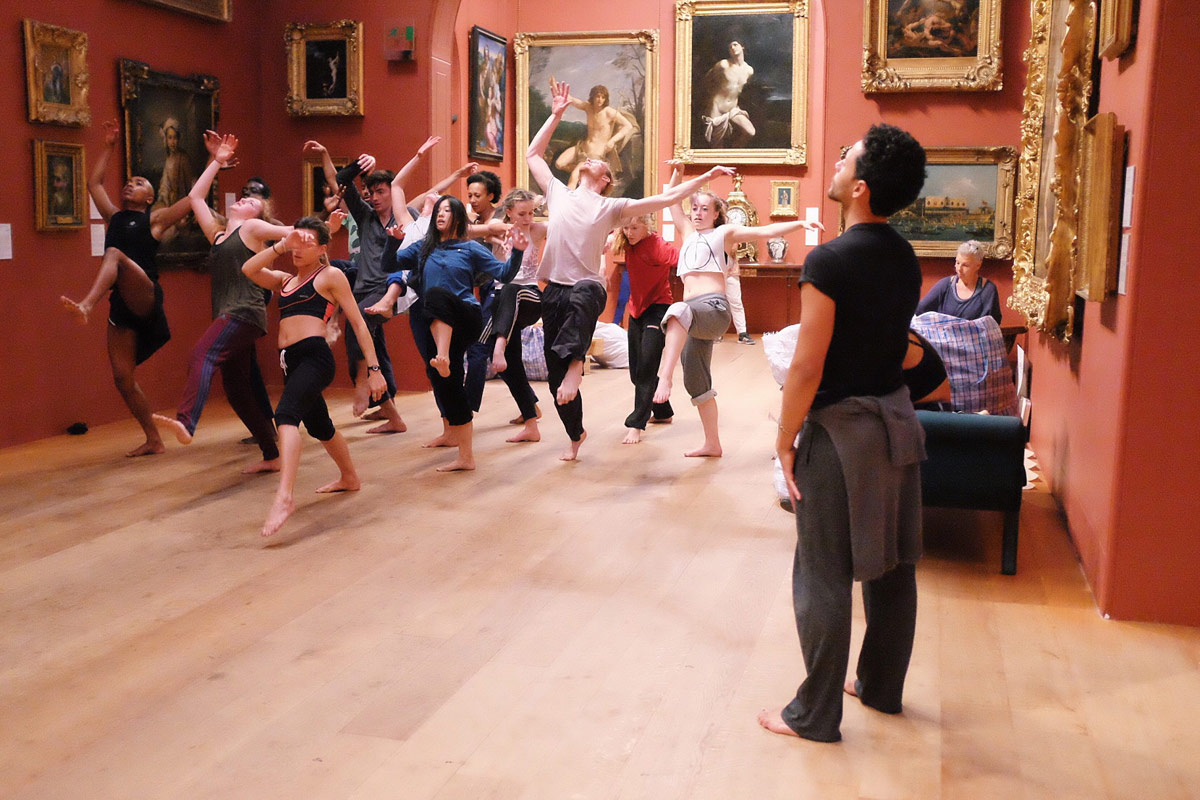
© Dolly Brown. (Click image for larger version)
Most dance works are viewed from one fixed position, meaning some audience members are at a disadvantage, due to the nature of traditional proscenium arch theatres. There are usually great distances from the back of the stalls or upper tiers to the stage and this can sometimes prevent the audience from having a vital connection with the performer. However, the intimate space at Dulwich allows for an up-close-and-personal experience, where audiences can see every facial expression, every twitch of a muscle and hear every breath or exhalation. This is a visceral experience and, to me, is how dance should be experienced, within close proximity.
This commission is therefore an opportunity to maximise on the visceral engagement possibilities for the visiting audience by embracing some of the more intimate spaces within the gallery, allowing for a 360-degree perspective that will heighten the overall experience.

© Dolly Brown. (Click image for larger version)
Winifred Knights’ The Deluge is a fascinating painting – when you first saw it what emotions did it stir?
The Deluge is a powerful painting. The subject matter, the imagery, the urgency and the parallels with our current reality are quite profound, very powerful. The immediate response upon seeing the painting is how strikingly reminiscent the movement of the ‘escaping’ figures is in relation to the dramatic events that have been unfolding for the past two years, with people in their thousands fleeing, escaping and running away from life-threatening circumstances. It’s spine chilling and hits you in the stomach, leaving you speechless.
On another level, there are also strong parallels with the choreography of Martha Graham, Bronislava Nijinska and, in particular, the dance masterpiece, ‘Dark Elegies’ by Anthony Tudor. My choreographic response for the interpretation of the painting and sketches by Winifred Knights is to bring to life the dramatic movement captured within the energy and urgency of the escaping figures and responding to the physical chaos represented in the painting.

© Karl Schoemaker. (Click image for larger version)
How do you jump from the inspiration of the painting and the Dulwich gallery space to creating dance – do you create in the studio on the fly or do you have it all worked out?
There is not much time to create ‘on the fly’ and experiment with many ideas – rehearsal slots are quite tight because space in London is expensive and some organisations would rather make a penny off you than support you. As a result, I’ve come prepared with most of the ideas worked out ahead of the first rehearsals, so we can maximise the minimal time we have in the studio.
I was also fortunate to have been invited to the Cohan Collective residency for two weeks with Robert Cohan and Yorke Dance Project, prior to the start of this creative process. We’ve been offered a great studio deal with Middlesex University where the residency took place and some of the seeds of my creative output during this project have sprouted and given life to some of the movement vocabulary included in this work. I also researched large-scale choreographic sketches with 20 to 30 students in South Africa whilst on a teaching and choreographic workshop/research tour for my Moving Assembly Project last year. The sketches were created to a selection of compositions from ‘Floodplain’, an album by Kronos Quartet created in 2009 and there are distinctive parallels between the energy and focus of the music with the brutal reality of the current migration and refugee crisis.
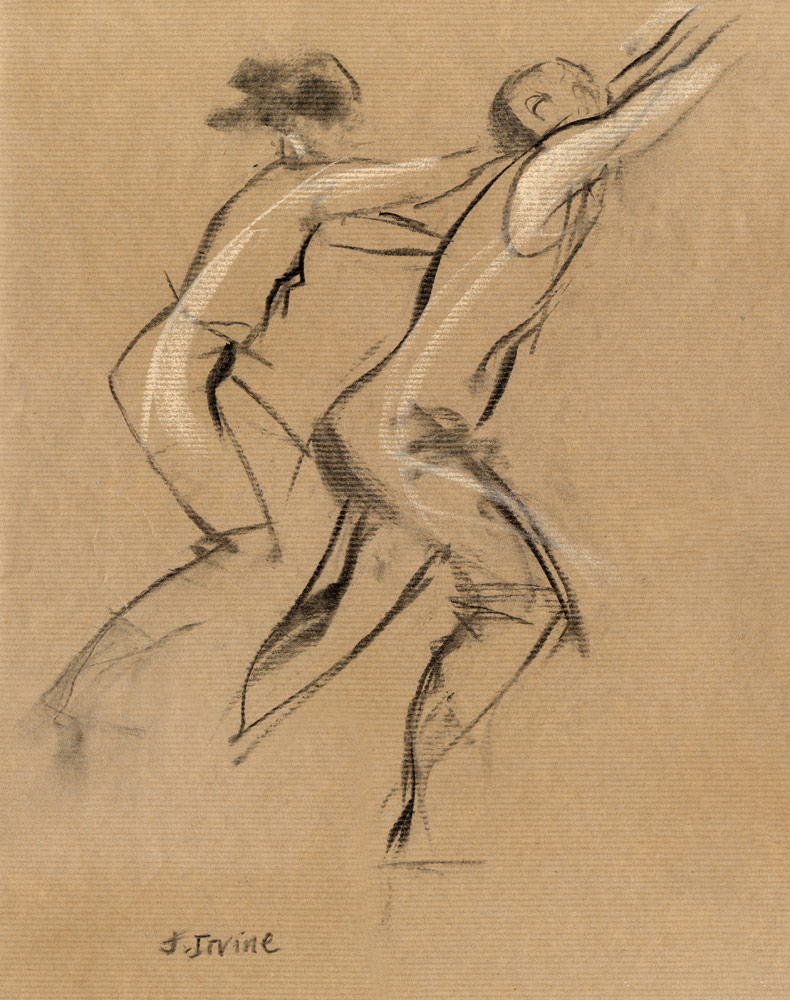
© Jan Irvine. (Click image for larger version)
The word ‘exodus’ encapsulates everything significant within Winifred Knights’ astonishing masterpiece. We see a group, or community of people, escaping from an external force – in this case, a large body of water. The essence of the quartet’s music is in direct response to this physical and metaphorical force and was inspired by the idea that “floodplains will experience new life after a catastrophe, just as cultures that undergo great difficulty will experience creative fertility”.
How are you structuring the night? Last time you had a real diversity of pieces from solos to a significant group work. And who are your dancers?
The evening will consist of a series of intimate dance vignettes in response to some of the preparatory sketches in the exhibition. The dance, for 16 dancers, will be choreographed to exist within different rooms of the gallery around installations created by set designer Natalie Favaloro. The audience will be invited to see the exhibition and walk freely around the gallery to witness the different stories unfolding, as the dancers, costumed by Nicolai Hart Hansen, build the narrative within the different rooms of the gallery. The evening will culminate in a full dance performance, combining all the characters flowing towards the central hall in a physical portrayal of the dramatic tension and energy of the painting.

© Dolly Brown. (Click image for larger version)
I am happy to be working with a large cast of professional and recent graduate dancers. I’m reunited with Cree Barnett Williams, Jordi Calpe Serratts, Manuela Sarcone, Seren Williams and Emma Farnel-Watson. New additions include Luke Crook and Rob Bridger, alongside a host of recently graduated dancers from London Contemporary Dance School, Central School of Ballet and Rambert School. We have a special guest artist who will be joining us, Nao Masuda, and I look forward to dancing to her music.
You recently started the Moving Assembly Project that is about using dance and performance to help disadvantaged children in South Africa – do tell more and what’s happening next.
I’m so inspired by the vision for the Moving Assembly Project (MAP). We had a fantastic pilot project this year as we taught about 80 students over a 3-week period – most of them had never danced before. Together with dancer Estela Merlos, I choreographed two works that were eventually performed by the students to members of the community. We received fantastic support from Dancers’ Career Development (DCD), The Linbury Trust, Lisa Ullman Travel Scholarship Fund, Ubuntu Education Fund, Amaphiko Township Project and Harlequin Floors – and we are only half a year into the initiative!
I also went to Rwanda as a volunteer to teach and choreograph for street children who are part of the USA-led Mindleaps training programme. MAP and Mindleaps are hoping to collaborate on a South African project next year, subject to funding.
We will soon be launching a fundraising campaign to build a mobile studio that can travel to different parts of South Africa initially, then further up the continent.

© Karl Schoemaker. (Click image for larger version)
There are many exciting things in store for MAP but it all takes time and I still have to find a way to live and be a freelance artist in London. After this series of performances at Dulwich Picture Gallery I am dancing in Didy Veldman’s new company ‘Umanoove’ for her first production, ‘The Happiness Project’ and I am also very happy to announce that I will be teaching free contemporary dance classes at Pop Brixton in London every Monday morning so look out for that. There are some exciting projects in the pipeline for next year and I’m currently walking, cycling on my new bicycle actually, with arms wide open to embrace all opportunities and planting many creative seeds along the way.








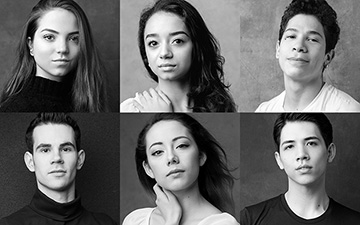
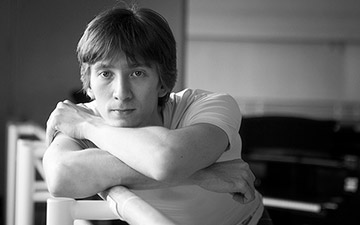
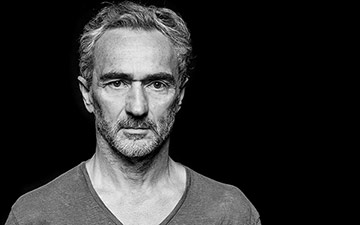
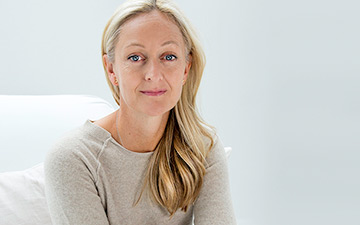


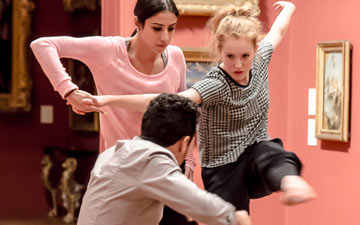

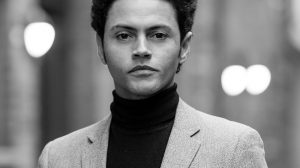
You must be logged in to post a comment.